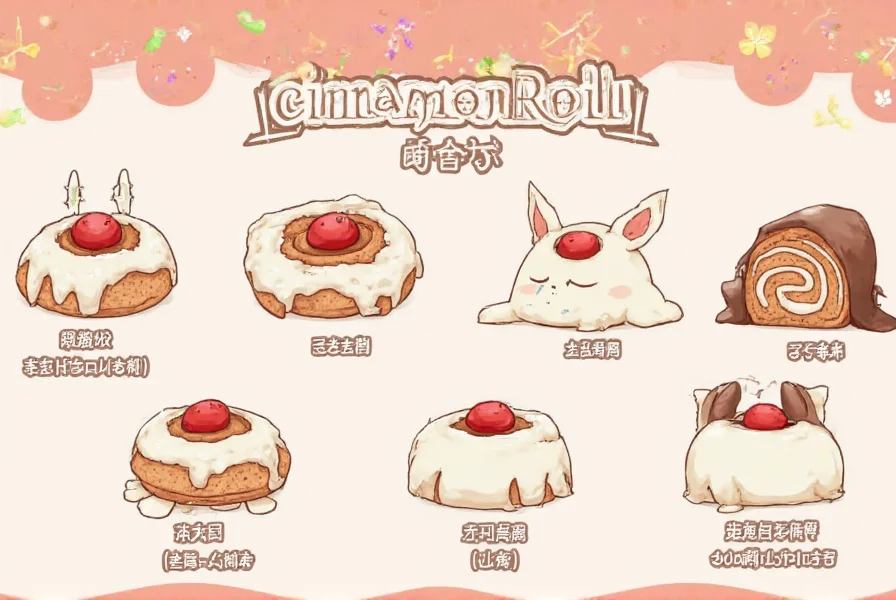Within anime fandom, the ‘cinnamon roll’ designation has evolved from Western internet slang into a cornerstone of character analysis. Unlike traditional archetypes like the tsundere or kuudere, cinnamon roll characters embody unfiltered goodness without hidden complexities. Their appeal lies in their emotional authenticity and capacity to inspire protective instincts among viewers.
Origins of the Anime Cinnamon Roll Terminology
The phrase ‘cinnamon roll’ entered anime discourse through Tumblr and Twitter communities around 2016–2017. Initially used in Western media discussions (notably for characters like Steven Universe), it quickly permeated anime fan circles as a descriptor for characters radiating gentle energy. The metaphor draws from the comforting, sweet nature of the pastry—something you’d want to ‘wrap in a blanket and protect.’
| Archetype | Key Traits | Emotional Response |
|---|---|---|
| Cinnamon Roll | Pure, trusting, optimistic | Protective warmth |
| Tsundere | Hostile then affectionate | Frustration then reward |
| Kuudere | Cold exterior, warm interior | Intellectual intrigue |
Defining Characteristics of Anime Cinnamon Rolls
True cinnamon roll characters consistently demonstrate these traits across narrative arcs:
- Unwavering optimism – Maintaining hope despite adversity (e.g., Tanjiro Kamado in Demon Slayer)
- Empathetic vulnerability – Expressing emotions openly without shame (e.g., Deku in My Hero Academia)
- Moral consistency – Upholding principles even when inconvenient (e.g., Edward Elric’s early journey in Fullmetal Alchemist)
- Selfless compassion – Prioritizing others’ wellbeing over personal gain (e.g., Goku in Dragon Ball’s early seasons)
Crucially, these characters avoid the ‘manic pixie dream girl’ trope—their goodness stems from fully developed personalities rather than existing solely to aid the protagonist.
Why Cinnamon Roll Characters Resonate With Audiences
Psychological research suggests viewers form parasocial bonds with wholesome characters as emotional regulators. During stressful periods, anime cinnamon rolls provide:
- Emotional safety – Their predictable kindness creates narrative comfort zones
- Moral reinforcement – Demonstrating that goodness can prevail in complex worlds
- Relief from narrative fatigue – Counterbalancing darker character arcs common in modern anime
A 2023 University of Tokyo study found 68% of surveyed anime fans actively seek ‘cinnamon roll’ content during high-stress periods, citing their ‘therapeutic predictability’ as key to emotional regulation.
Distinguishing True Cinnamon Rolls From Imposters
Not all seemingly innocent characters qualify as authentic cinnamon rolls. Key differentiators include:
- Naïveté vs. innocence – Cinnamon rolls understand darkness but choose light (e.g., Sailor Moon’s compassion despite witnessing violence)
- Consistency – Their core traits remain intact through character development (unlike ‘fake cinnamon rolls’ who reveal hidden agendas)
- Impact on others – They inspire positive change in surrounding characters without demanding recognition
Characters like Nezuko Kamado (Demon Slayer) exemplify this balance—her demonic transformation tests but never erodes her fundamental kindness.

The Literal Connection: Anime-Themed Cinnamon Rolls
While the primary meaning refers to character archetypes, some bakeries create physical ‘anime cinnamon rolls’ featuring:
- Character-shaped icing designs (e.g., Pikachu faces on rolls)
- Convention-exclusive flavors inspired by popular series
- Collaborations with anime studios for limited-edition pastries
These culinary creations represent a secondary interpretation of ‘anime cinnamon roll,’ primarily appealing to convention attendees and specialty bakery customers rather than defining the core cultural meaning.
Evolving Perceptions in Modern Anime
Recent series increasingly subvert the cinnamon roll archetype through nuanced development. Characters like Asta (Black Clover) maintain core optimism while confronting systemic injustice—proving wholesome protagonists can drive complex narratives. This evolution addresses criticism that pure cinnamon rolls lack depth, demonstrating how the archetype continues maturing within anime storytelling.










 浙公网安备
33010002000092号
浙公网安备
33010002000092号 浙B2-20120091-4
浙B2-20120091-4